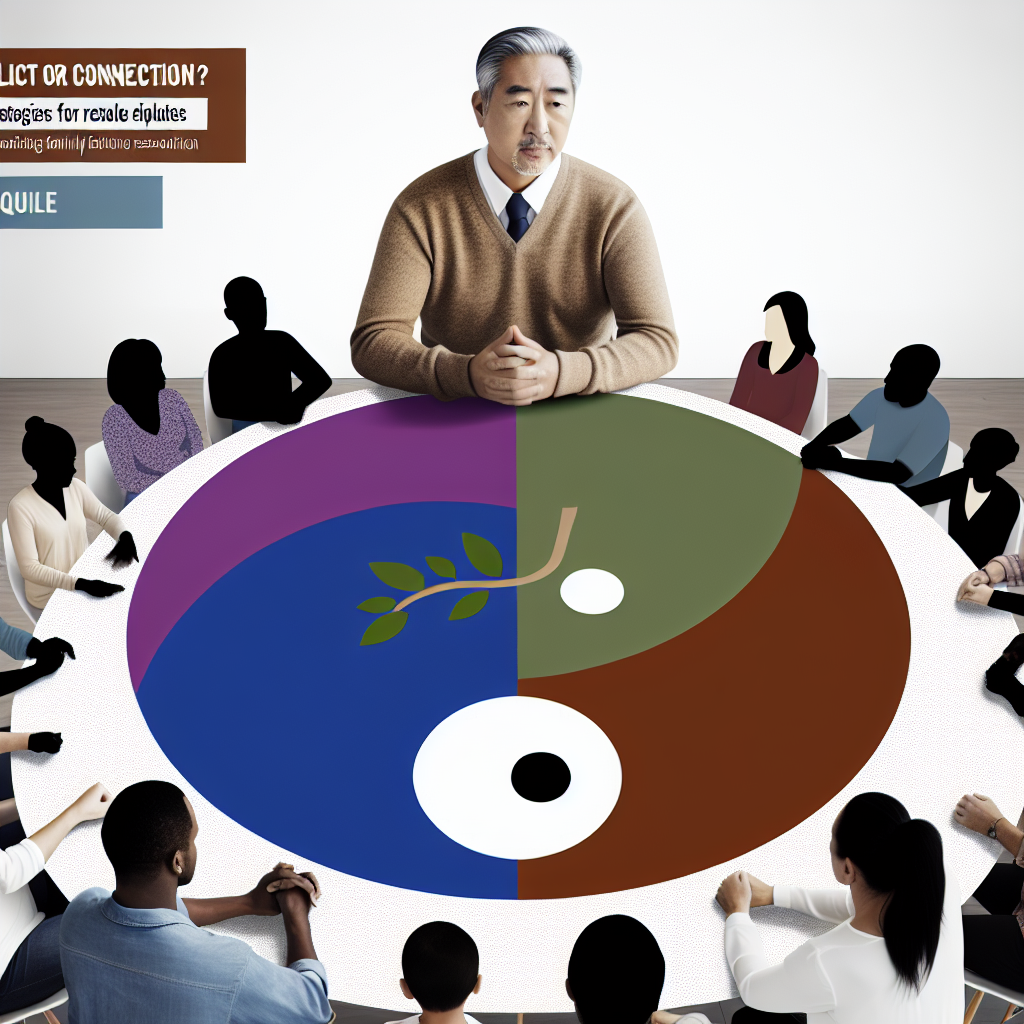
Conflict or Connection? Essential Strategies for Families to Resolve Disputes
Introduction
Disputes within families are as common as they are frustrating. Whether it’s about household chores, financial decisions, or differing parenting styles, conflicts can create tension and division. But what if these disputes could be transformed into opportunities for connection? In this article, we’ll delve into Conflict or Connection? Strategies for Families to Resolve Disputes. This exploration aims to provide you with powerful insights and actionable strategies that not only resolve conflicts but also strengthen family bonds.
Understanding Conflict
What Is Conflict?
Conflict is a natural part of any relationship. In a family setting, it can arise from differing values, perspectives, and needs. It’s essential to understand that conflict itself isn’t inherently bad; it can be a catalyst for growth and understanding if approached correctly.
Types of Family Conflict
| Type of Conflict | Description |
|---|---|
| Interpersonal | Disagreements between individual family members. |
| Structural | Issues related to roles and responsibilities within the home. |
| Value-based | Conflicts arising from differing beliefs or cultural norms. |
| Resource-based | Tensions due to competition for limited resources like time or money. |
The Importance of Connection
In contrast to conflict, connection fosters understanding, empathy, and collaboration. Strengthening family connections can significantly reduce the frequency and intensity of disputes. How can families bridge this gap from conflict to connection?
The Benefits of Connection
- Enhanced Communication: Strong connections lead to open dialogues.
- Emotional Support: Families that connect are better at supporting each other through tough times.
- Conflict Resolution Skills: Engaged families develop strategies to address disagreements more effectively.
Strategies to Transform Conflict into Connection
1. Open Communication
Creating a Safe Space
Establishing a safe environment for discussions is pivotal. Families should designate specific times for conversations, free from distractions. This allows members to express their feelings openly.
Case Study: The Johnson Family
The Johnsons struggled with constant misunderstandings. They decided to hold weekly family meetings in a relaxed environment (around the dinner table) where everyone could voice their thoughts. Over time, this practice diminished arguments and led to deeper connections.
Analysis: The Johnson family illustrates that creating routines for open discussions can transform the communication dynamics, lowering the potential for conflicts.
2. Active Listening
The Power of Listening
Active listening means truly hearing and understanding what others are saying without formulating a response in your mind. This skill can significantly reduce escalations during disputes.
Techniques for Active Listening
- Paraphrasing: Repeat what the other person said to clarify understanding.
- Reflecting Feelings: Acknowledge emotional responses to show empathy.
Case Study: The Martinez Family
In the Martinez household, arguments often spiraled because members interrupted one another. After a family counselor suggested practicing active listening, they implemented a ‘talking stick’ rule. Only the person holding the stick could speak, ensuring everyone felt heard.
Analysis: The Martinez family’s experience shows that structured listening techniques can foster understanding and connection during conflicts.
3. Collaborative Problem Solving
Turning Disputes into Joint Efforts
Instead of approaching conflicts as winners and losers, families can benefit from viewing them as opportunities to collaborate. This means involving everyone in finding a solution.
Steps for Collaborative Problem Solving
- Define the problem together.
- Brainstorm solutions collectively.
- Evaluate the solutions based on family values.
Case Study: The Thompson Family
The Thompsons frequently clashed over household tasks. They began using a whiteboard to list chores and allowed each family member to choose their tasks collaboratively. By involving everyone in the decision-making process, they decreased conflicts over responsibilities.
Analysis: The Thompson family’s proactive approach illustrates that collaboration transforms conflict into shared responsibility and connection.
4. Empathy and Understanding
Cultivating Empathy
Empathy is fundamental in navigating conflicts. When family members attempt to understand each other’s feelings and perspectives, it becomes easier to resolve disputes amicably.
Practices to Build Empathy
- Role Reversal: Try to approach a situation from the other person’s viewpoint.
- Empathy Mapping: Create a visual representation of how family members may feel during different conflict scenarios.
Case Study: The Williams Family
The Williams family implemented empathy exercises after noticing frequent arguments among siblings. They would take turns expressing how they felt during conflicts, followed by the others reflecting back their feelings. This practice not only resolved disputes but deepened their emotional connection.
Analysis: The success of the Williams family emphasizes the transformative power of empathy in reducing conflict and fostering connection.
5. Setting Boundaries
Clarity Around Roles and Responsibilities
Sometimes, conflicts are rooted in unclear expectations. Establishing clear boundaries fosters a sense of safety and respect within the family unit.
How to Set Boundaries
- Discuss individual needs openly.
- Lay out household rules collaboratively.
- Review and revise boundaries periodically.
Case Study: The Green Family
The Greens faced friction when parents had different expectations regarding screen time for their children. By openly discussing their perspectives and setting clear limits together, they established mutual respect and lessened resistance.
Analysis: The Green family learned that clear boundaries help prevent conflicts by aligning expectations among all family members.
Tools for Conflict Resolution
Conflict Resolution Strategies Table
| Strategy | Description | When to Use |
|---|---|---|
| Open Communication | Create a safe space for open dialogues. | During misunderstandings. |
| Active Listening | Practice truly hearing each other. | In emotional discussions. |
| Collaborative Problem Solving | Involve everyone for joint solutions. | When conflicts are resource-based. |
| Empathy Exercises | Cultivate understanding through role reversal. | In emotionally charged conflicts. |
| Setting Clear Boundaries | Outline roles and responsibilities. | To minimize misunderstandings. |
Conclusion
In the end, the choice between Conflict or Connection is not always easy. However, by employing strategies like open communication, active listening, collaborative problem-solving, empathy, and clear boundaries, families can transform disputes into opportunities for connection. These practices not only resolve conflicts but also reinforce the emotional bonds that hold families together.
Embrace these strategies today, and watch your family evolve from a conflict-ridden environment to one overflowing with understanding, connection, and love.
FAQs Section
1. What are some common causes of family conflicts?
Common causes include poor communication, differing values, unmet needs, and competition for resources.
2. How can I improve communication with my family?
Establish regular family meetings, practice active listening, and create a safe space for sharing feelings.
3. What should I do if a conflict escalates?
Take a break to cool down, reassess the situation, and revisit the discussion when emotions have settled.
4. Are there specific techniques for teaching children conflict resolution?
Role-playing different conflict scenarios and involving them in family discussions can help children learn effective resolution strategies.
5. How can I encourage empathy in my family?
Engage in empathy-building exercises, such as discussing feelings, journaling, or practicing active listening techniques.
By incorporating these strategies, families will find themselves better equipped to handle disputes effectively while fostering deeper connections.
















